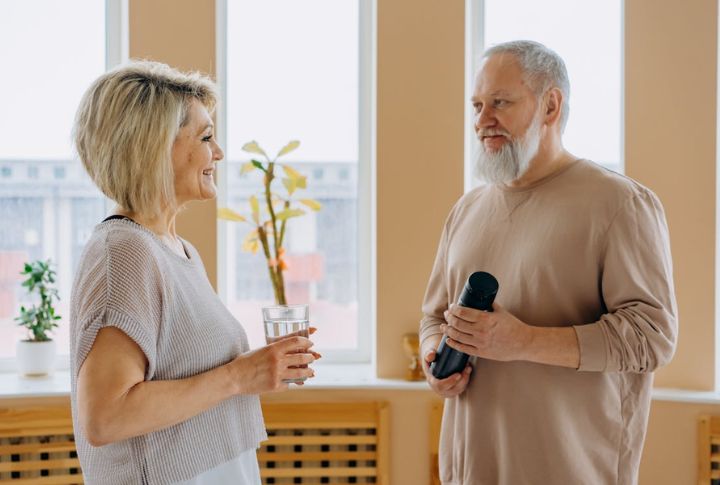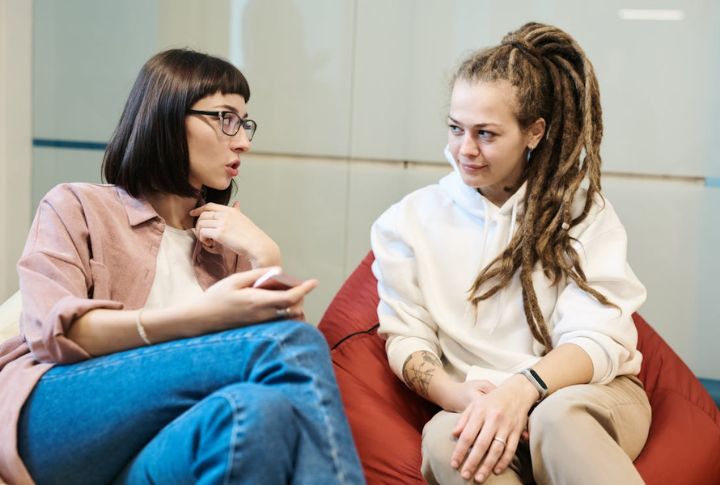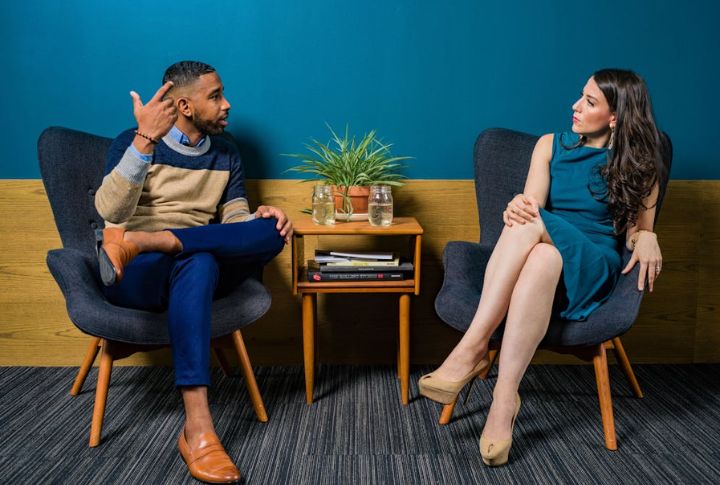
Without saying a word, your eyes can start conversations. Every glance you give holds the power to attract, affirm, provoke, or persuade. Across cultures and contexts, eye contact leaves a lasting impression that shapes the way people perceive you. Let’s explore 10 hidden messages behind your look.
Steady Gaze Shows Confidence

A steady gaze tends to anchor perception. When someone avoids looking directly at others, it’s frequently seen as a sign of nervousness or insecurity. People instinctively associate consistent eye contact with leadership and emotional stability, from hiring managers to infants.
Mirrored Gazes Reveal Rapport

When two people unconsciously match each other’s gaze—timing, direction, and even blink rate—it signals a high level of connection. This mirroring tends to happen during moments of mutual respect or shared emotion. It’s a nonverbal cue that both feel seen, understood, and in sync.
Shared Glances Signal Chemistry

Eye contact lingers longer when affection is involved. Couples who maintain mutual gaze feel more connected, thanks in part to a rush of bonding hormones like oxytocin. In first encounters, especially during speed dating, shared glances sometimes spark stronger chemistry than any spoken words.
Signals Mental Preparedness

The steadiness of your eyes just before speaking can suggest whether you’re well-prepared or winging it. A focused, calm look implies thoughtfulness, while hesitation or darting signals uncertainty. Listeners quickly make that judgment before you even start talking.
Shows Attention And Engagement

The way you look at someone when they speak tells them if you’re mentally there. Steady eye contact signals attention and curiosity. It makes others feel heard. Public speakers, teachers, and even friends gauge your engagement level based on how your eyes follow the moment.
Blink Rate Reflects Cognitive Load

Blinking isn’t just a reflex—it speeds up when you’re stressed, lying, or mentally overloaded. A rapid blink rate during questioning or decision-making may indicate discomfort or internal conflict. Conversely, slow blinking can signal boredom or disengagement, making it a quiet cue for emotional state.
Signals Of Emotional Depth

People often read empathy through your gaze. Holding eye contact with care—not too intense, not too fleeting—makes others feel understood. It suggests you’re emotionally tuned in. Therapists use this to build trust, and strangers quickly judge emotional warmth based on how your eyes respond to theirs.
Invitations To Connect

A soft, steady gaze often signals warmth and openness, creating a subtle invitation to engage. In social situations, people gravitate toward those whose eyes offer acceptance without pressure. This gentle form of eye contact builds emotional safety and lowers social defenses in just a few seconds.
Dominance Or Aggression

Maintaining direct eye contact during disagreement can come off as bold or confrontational. In power dynamics, holding a gaze too long is often interpreted as a challenge. People in leadership roles sometimes read this as defiance, especially if it’s paired with stillness or silence.
Curiosity Versus Scrutiny

The same long look can land differently depending on intention. Curious eyes flicker with movement and lightness, often shifting gently between features. Scrutinizing looks, in contrast, feel still and heavy, more like evaluation than interest. Most people can sense the difference in a heartbeat.

